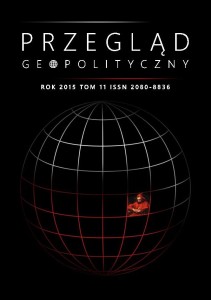MIĘDZY FEDERALIZMEM A WSPÓLNOTĄ PAŃSTWOWĄ: NARODY AUSTRO-WĘGIER WOBEC ROZPADU DUALISTYCZNEJ MONARCHII HABSBURSKIEJ W LATACH 1918-1919
BETWEEN FEDERALISM AND STATE COMMUNITY: THE NATIONS OF THE AUSTRO-HUNGARIAN DUAL MONARCHY TO THE DISINTEGRATION OF THE HABSBURG MONARCHY IN 1918-1919
Author(s): Grzegorz BaziurSubject(s): Geography, Regional studies, Government/Political systems, Pre-WW I & WW I (1900 -1919), Interwar Period (1920 - 1939), Ethnic Minorities Studies, Geopolitics
Published by: Polskie Towarzystwo Geopolityczne
Keywords: Austria-Hungary; Czechoslovakia; Hungary; Slovakia; Transylvania; eastern Switzerland; federalism; helwetyzation;
Summary/Abstract: The article presents a disintegration of Austria-Hungary in the autumn of 1918. The author described the last two years of the existence of the Austro-Hungarian Empire. An important concept is the description of the eastern Swiss Minister for nationalities, Oskar Jászi`ego, as a desperate attempt to save the state: the negotiation of Transylvania with Romania in Arad and the Slovaks in the Slovak remain within Hungary. The author mentioned a manifesto of Karol I, whose aim was to preserve the state as possible on the basis of a federation – with the exception of Poles. Further described is the creation of Czechoslovakia and the situation in Slovakia during its occupation by the Czechoslovak army. In summary, author referred to the drama of CSR in the years 1938-1939, which was a consequence of the wrong nationality policies of the Governments of Czechoslovakia, resulting from the adoption in 1920 czechosłowakism rules, as a form of national assimilation of many ethnic minorities who lived in CSR.
Journal: Przegląd Geopolityczny
- Issue Year: 2015
- Issue No: 11
- Page Range: 55-78
- Page Count: 24
- Language: Polish

